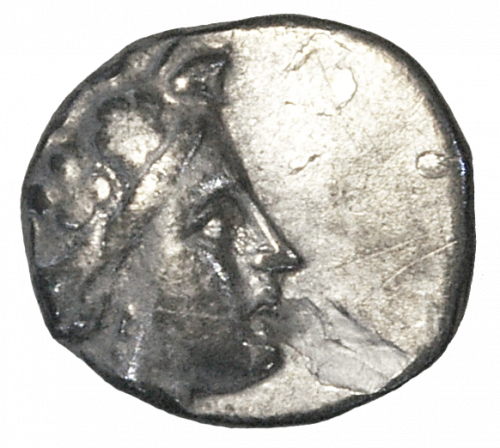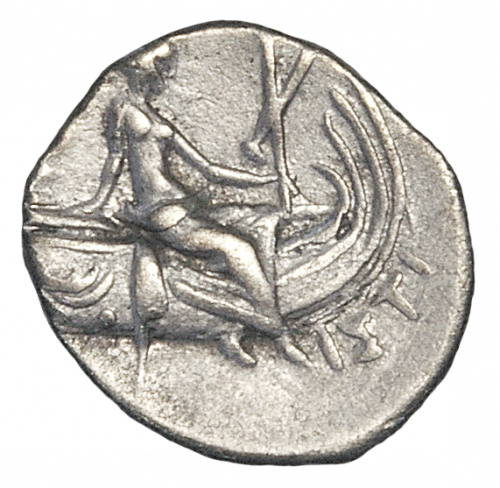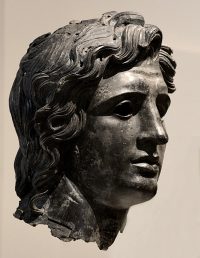A011
Silver
14 mm (1/2”), 3.1 grams
HISTORY: Quadrireme ships (see Detail 1) were large naval fighting vessels, oar powered and assisted by sail. Originally built by the Carthaginians in the 5th century BC, by the middle of the 4th century BC the design had been copied by the Roman, Greek, and other Mediterranean navies. Alexander the Great (Alexander III of Macedon, 356‒323 BC) boasted a fleet of quadrireme vessels used in his conquests of foreign powers. One such conquest was a seven-month-long war in 332 BC, waged against Tyre (known as the “Siege of Tyre”), the largest city-state in Phoenicia and a major hub of trade. Its island fortress was surrounded and blockaded while under siege and ultimately overtaken. Tyre is presently the southernmost city on the coast of Lebanon.
OBVERSE: This coin shows a right-facing portrait of Alexander the Great staring into an empty field (no textural references). A similar sculptural rendition can be seen in Detail 2.
REVERSE: Amphitrite, Greek sea goddess and consort of Poseidon, straddles the stern (aft) deck of a quadrireme. Her right hand rests on the tiller while her left hand grasps a mast as she dangles her feet in the water. The steering oar crosses in front of her right leg. In the wake of the ship are the letters “ISTI,” Latin translation for “him” (pronoun) or “herein” (adverb). This is likely a reference to Alexander the Great and his victory over Tyre.




